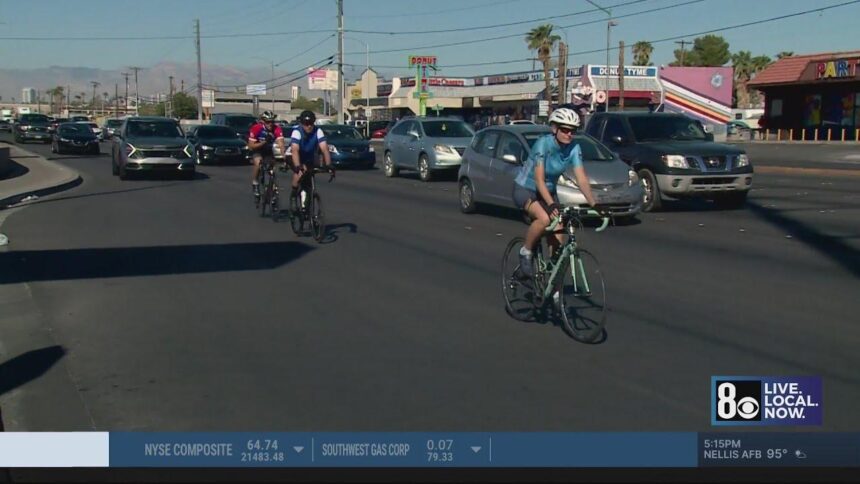CCSD Police Harness Laser Sensor Technology to Boost Cyclist Safety on Roads
Revolutionizing Road Safety: Laser Sensors on Police Bicycles
In a forward-thinking move to improve traffic safety and encourage responsible driving habits, the Clark County School District (CCSD) Police have deployed state-of-the-art laser sensor devices mounted on patrol bicycles.This innovative technology is designed to raise driver awareness about the presence of cyclists and promote safer road-sharing practices. By delivering immediate, data-driven feedback to motorists, the program aims to reduce dangerous interactions between vehicles and vulnerable road users, such as bicyclists, especially in busy urban areas.
How Laser Sensor Technology Enhances Driver Awareness
The laser sensors installed on police bicycles collect precise, real-time details about motorists’ behavior near cyclists, including passing distances, vehicle speeds, and lane positioning. This data enables officers to identify unsafe driving patterns and provide on-the-spot education to drivers, fostering a culture of caution and respect on the roads. Early program results indicate a significant advancement in driver compliance with safety regulations, demonstrating the effectiveness of this tech-driven approach.
Key Guidelines for Motorists Sharing the Road with Cyclists
- Keep at least three feet of clearance when overtaking cyclists to minimize collision risks.
- Slow down considerably when approaching or passing a bicycle.
- Signal lane changes well in advance and check blind spots carefully.
- Practice patience and respect to encourage cooperative road use.
| Metric | Before Program | After Implementation |
|---|---|---|
| Unsafe Passing Incidents | 38% | 15% |
| Average Passing Distance | 2 feet | 4.5 feet |
| Driver Compliance with Signals | 52% | 80% |
Real-Time Feedback: A Game Changer for Safer Roads
By equipping bicycles with laser sensors that instantly measure the distance between vehicles and cyclists, CCSD Police provide drivers with immediate alerts when they pass too closely. This proactive feedback mechanism not only helps prevent accidents but also educates drivers on maintaining safe distances. The technology’s ability to collect detailed behavioral data supports ongoing safety campaigns and informs future traffic enforcement strategies.
Advantages of the Laser Sensor System
- Precise measurement of vehicle-to-cyclist spacing
- Instant notifications to drivers about unsafe passing
- Thorough data collection to guide targeted safety initiatives
| Feature | Benefit | Impact |
|---|---|---|
| Laser Distance Sensors | Accurate spatial awareness | Decreases collision likelihood |
| Real-Time Alerts | Immediate driver correction | Enhances driving behavior |
| Data Analytics | Informs enforcement and education | Strengthens community safety |
Insights from Laser Sensor Data: Common Driver Errors Near Cyclists
Analysis of data gathered by the laser sensors reveals frequent mistakes drivers make when sharing the road with cyclists. These include dangerously close passing, speeding in bike zones, and neglecting to signal lane changes.Such behaviors significantly increase the risk of accidents and highlight the need for continued education and enforcement.
Identified Risky Behaviors and Their Prevalence
- Passing too close: 62% of vehicles passed within 2 feet of cyclists, violating safety standards.
- Excessive speed: 45% of drivers exceeded speed limits by 10 mph or more near bike lanes.
- Failure to signal: 38% of lane changes adjacent to cyclists were made without proper signaling.
| Driving Error | Frequency | Associated Risk |
|---|---|---|
| Passing within 2 feet | 62% | High chance of collision |
| Speeding near bike lanes | 45% | Reduced reaction time |
| Unsignaled lane changes | 38% | Unexpected vehicle movements |
Expert Recommendations for Protecting Vulnerable Road Users
Law enforcement and road safety experts stress the importance of drivers adopting safer habits to protect cyclists and pedestrians, who are more exposed to harm. The laser sensor initiative serves as a practical demonstration of the spatial awareness required to share the road responsibly. Experts advise motorists to:
- Maintain a minimum clearance of three feet when passing cyclists to ensure safety.
- Reduce speed in residential neighborhoods and areas with heavy pedestrian traffic to allow for quicker reaction times.
- Stay vigilant and avoid distractions such as mobile devices to anticipate sudden movements.
- Signal intentions early to communicate clearly with other road users.
| Common Driver Mistake | Recommended Corrective Action |
|---|---|
| Passing cyclists too closely | Increase lateral clearance to at least three feet |
| Ignoring pedestrian crosswalks | Always scan for pedestrians before proceeding |
| Failing to signal lane changes | Use turn signals well ahead of maneuvers |
| Distracted driving (e.g., phone use) | Keep focus on the road and avoid distractions |
Conclusion: Advancing Road Safety Through Technology and Education
The CCSD Police’s adoption of laser sensor technology on bicycles exemplifies a proactive and innovative approach to improving road safety for cyclists and other vulnerable users. By combining real-time monitoring with immediate driver feedback and targeted education, the program fosters a safer, more respectful road-sharing habitat. As this initiative evolves, community members can anticipate further efforts aimed at reducing accidents and enhancing awareness, reflecting a strong commitment to adapting law enforcement strategies to modern transportation challenges.
